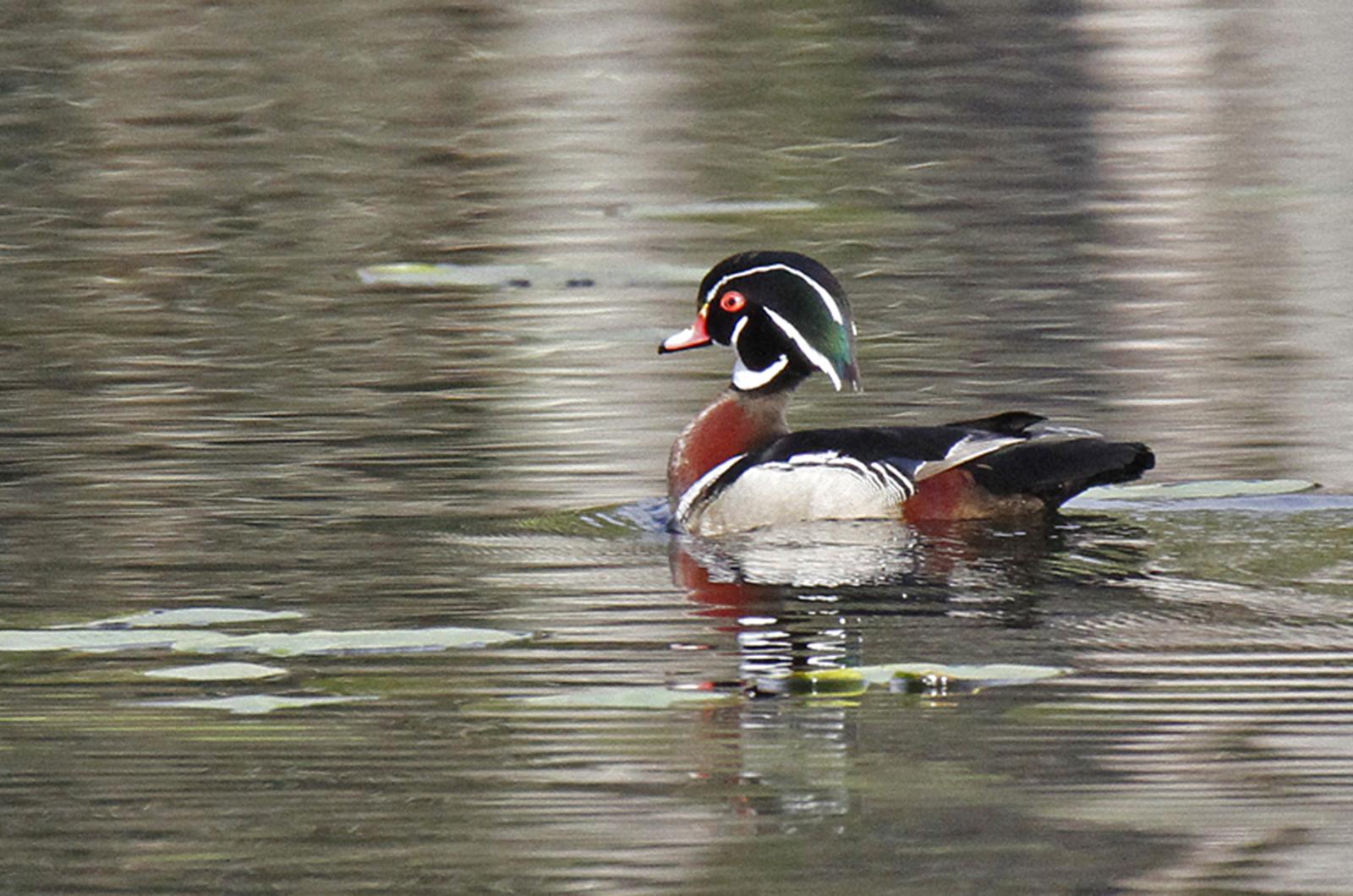This bird is no ugly duckling.
It is impossible not to be impressed by the good looks of the wood duck. Though the drake gets most of the flattery with his colorful breeding plumage and curiously-crested boxy head, the female is no shrinking violet either. She also boasts a similarly notable noggin, very distinctive white teardrop-shaped plumage around her eyes, and a dark blue wing patch.
Their looks are not only skin deep. Wood ducks are impressive inside and out. Start with their esoteric esophagus.
These creatures are omnivores, eating a variety of foodstuff, including plants, seeds, insects, snails, tadpoles and salamanders. Even more specifically, they are nuts about acorns. Wood ducks can swallow acorns as big as half an inch wide and two inches long, and can hold as many as thirty acorns in their esophagus, which is expandable to accommodate those large meals.
While these ducks have a beak with serrated edges and a mouth with a tongue, the breakdown of their food is accomplished by their grinding gizzard. As dabbling ducks, they feed from ponds and wetlands by tipping up their bottoms and foraging for foodstuff on the surface and under the water. They also eat landside, gobbling up terrestrial tidbits too.
Returning to the Vineyard at the end of March to breed, wood ducks can be seen on-Island most reliably at Cranberry Acres and at other freshwater ponds and wooded wetlands. They are cavity nesters, preferring water-adjacent domiciles, and breed in natural tree hollows and nest boxes set up for their use.
Soon after mating, if well nourished, females will lay up to 12 eggs. Food supply is key to her success, since she must ingest a lot of high-quality protein to lay her eggs. Notably, it takes more than 2.5 ounces of invertebrates consumed to produce one egg. One estimate suggests that a female wood duck must eat more than three hundred invertebrates an hour for eight hours to assure successful egg production.
If nests are too close, females can get confused and lay eggs in other wood ducks’ nests, sometimes doubling the number of eggs and offspring produced from one nest. Nests are best located above water and/or a soft substrate (leaves or moss), since chicks will leave the nest only one day after they are hatched. Hatchlings bravely jump out of their natal lair and can fall from 50 to 100 feet (usually without injury) into the water or one the soft ground where they will begin to forage for themselves, only joining their mother when she vocalized to round them up.
Elusive and not widespread on the Island, wood ducks have had a history of scarcity and success nation-wide. Their habitat needs are very specific and our wetlands and ponds have long been altered to their detriment. That colorful breeding plumage was highly valued before feather hunting was outlawed, and these flavorful fowl were also at one time popular table fare. The chemical DDT led to a population decline due to the reduction of their insect prey, and nesting box programs added to their eventual recovery.
It has been said that looks don’t last, and after mating both sexes of wood ducks will revert to duller plumage. That is okay for those of us who favor all types of feathers for these fowl. Beauty is, after all, in the eye of the beholder, and these birds never lose their loveliness. If you can appreciate their attributes, these things of beauty are a joy forever.
Suzan Bellincampi is director of the Felix Neck Wildlife Sanctuary in Edgartown, and author of Martha’s Vineyard: A Field Guide to Island Nature and The Nature of Martha’s Vineyard.







Comments
Comment policy »